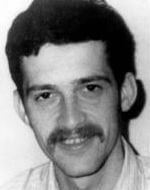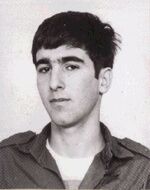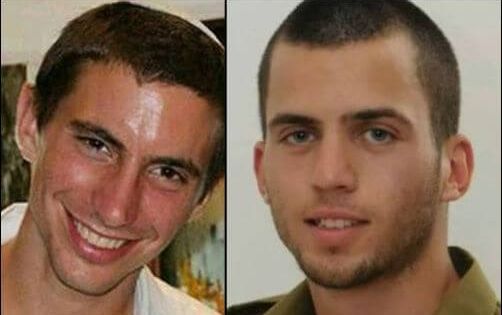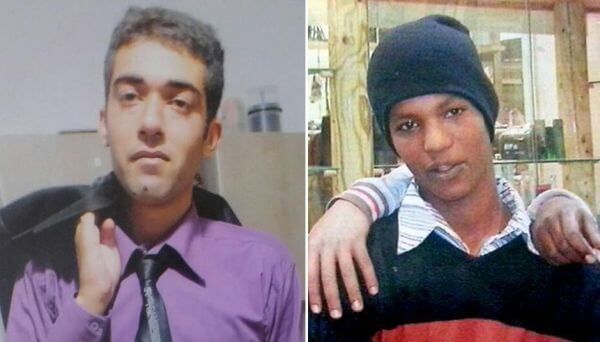Nothing touches a nerve in Israeli society like missing or captive soldiers. Nearly everyone does military service, or knows someone who does. People who complete their obligatory active military duty are liable to periodic reserve call-ups. So it’s not unusual for hundreds — even thousands — of Israelis to attend the funeral of a soldier they never met. The feeling, “That could have been me or my son” is very powerful.
That visceral worry is even greater when it comes to missing soldiers. There’s no closure.
Join the fight for Israel’s fair coverage in the news
Falling in the line of the duty, being captured, or simply disappearing are known hazards of military life. While governments have a duty to bring back those missing in action, the state’s responsibility to “bring them back” is magnified when military service is mandatory. And that’s without getting into the Jewish ethos of redeeming captives.
So who are the missing soldiers whose families have not had closure for years, or in several cases, decades?
The Missing Soldiers
Missing in action (MIA) refers to soldiers who are unaccounted for, and the army doesn’t know their fate. The Hebrew word for MIA is ne’edar, which literally translates as “absent” or “unaccounted for.”

Tzvi Feldman
Rank: Sgt. 1st class
Born: December 29, 1956 in Tel Aviv
Disappeared: June 12, 1982
Feldman was the oldest of the Sultan Yacoub MIAs. He had completing his regular army service and worked as a nature guide for high school groups. Feldman and his girlfriend were considering marriage when the war in Lebanon broke out.

Yehuda Katz
Rank: Sgt. 1st class
Born: July 18, 1959 in Ramat Gan
Disappeared: June 12, 1982
The son of Holocaust survivors, Katz, like Baumel, served in the Hesder program, studying at Yeshivat Kerem B’Yavneh, near Ashdod. Katz went into battle at Sultan Yacoub only ten days before he was due to be discharged from service.

Ron Arad
Rank: Major
Born: May 5, 1958 in Hod HaSharon
Disappeared: October 16, 1986
Arad was studying chemical engineering at the Technion when he was called up for reserve duty. He was the navigator of an F-4 Phantom plane that was shot down near the Lebanese city of Sidon. After safely parachuting out, Arad was captured by Amal, a Shiite militia. Israel believes Arad’s fate is now controlled by Iran or one of its Lebanese proxies.
Arad leaves behind a wife, Tami, and a daughter, Yuval, who was 15 months-old when her father disappeared.
Related reading: The 1982 Lebanon War – Operation Peace For the Galilee

Guy Hever
Rank: Sgt. 1st class
Born: May 30, 1977 in Nahariya
Disappeared: August 17, 1997
Hever, sometimes described as a “computer geek” and science fiction buff, was last seen at his Golan Heights army base on the morning of his disappearance. Due to an incident for which Hever received a court martial for insubordination, IDF investigators initially surmised that the Artillery Corps soldier had left the base without permission and committed suicide. Despite years of searching — including minefields along the Syrian border — no trace of Hever or his weapon was ever found.
His mother claims Hever was abducted taken into Syria. Other theories propose he became trapped in one of the Golan’s many caves or managed to cross into Syria on his own accord. Hever’s disappearance during a time of calm and the lack leads is unprecedented for the IDF; his fate may never be known.
Not MIAs
Although Hamas holds the bodies of Lt. Hadar Goldin and Staff Sgt. Oron Shaul, the IDF has confirmed that both are indeed dead, both killed on August 1, 2014 while fighting in Gaza during Operation Protective Edge. Because the army was able to confirm their deaths, they are not considered “Missing in Action,” but rather fallen soldiers whose place of death is unknown. Israel seeks the return of their bodies and holds Hamas responsible.

Unfortunately, Goldin and Shaul aren’t the only soldiers who were killed in action but whose bodies were not recovered. The Times of Israel explains:
In total, there are 176 IDF soldiers who are designated as killed-in-action but whose exact burial places are not known, the majority of them — 95 — from the 1948 War of Independence, Israeli said.
The missing persons unit, known by its Hebrew acronym EITAN, is charged with searching for them. Three have been found in the past year: Pvt. Livka Shefer, who was killed in 1948; Lt. Yakir Naveh, whose plane crashed in the Sea of Galilee in 1962; and now Baumel.
Related reading: In Focus: Israel’s Gaza Wars
The Captive Civilians
Separately from the soldiers, two Israeli civilians are also held in Gaza. Both are mentally unstable and wandered across the border in separate incidents. Avraham Mengistu, of Ashkelon, crossed into the Strip on September 7, 2014. Hisham al-Sayed, a Bedouin from the Negev town of al-Hura, managed to enter the Strip on April 20, 2015. Israel seeks their return and holds Hamas responsible for their fate.

Featured image: background vector created by kjpargeter – www.freepik.com;
Before you comment on this article, please note our Comments Policy. Any comments deemed to be in breach of the policy will be removed at the editor’s discretion.

